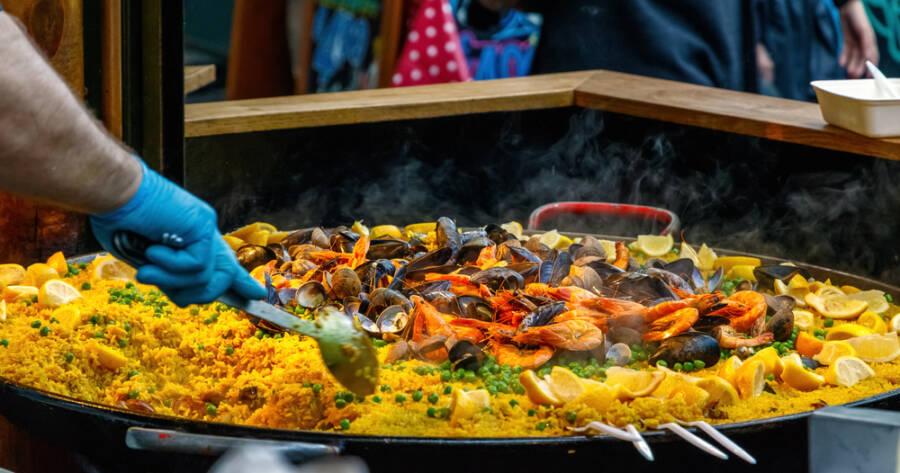Asia, a continent rich in cultural diversity, offers a tantalizing array of culinary experiences that tempt the taste buds and warm the heart. From the aromatic spices of India to the delicate flavors of Japan, each region provides a distinct gastronomic journey that is as enlightening as it is delicious. This exploration of Asian cuisine serves to celebrate the variety and complexity inherent in this vast and varied landscape, highlighting the unique culinary traditions that define the region.
The Spices of India: A Symphony of Flavors
India, known for its vibrant palette of spices, showcases a cuisine that is a testament to its rich history and cultural diversity. Traditional Indian dishes often incorporate a blend of spices like cumin, coriander, turmeric, and cardamom, creating an intoxicating aroma and flavor.
Although many believe these spices may have potential health benefits, such as supporting digestion and enhancing metabolism, these claims are continually researched and not guaranteed. India’s street food scene, featuring popular snacks like samosas and chaat, offers a casual yet immersive experience into the country’s culinary soul.
The Elegance of Japanese Dining: A Delicate Art
Japanese cuisine, celebrated for its artistic presentation and precision, is grounded in the principles of harmony and balance. Dishes such as sushi and sashimi emphasize fresh, high-quality ingredients like fish, rice, and seaweed.
Ingredients like miso and green tea are often associated with certain health benefits, though individual effects can vary widely. Kaiseki, Japan’s traditional multi-course meal, showcases the meticulous craftsmanship of Japanese chefs, reflecting seasonal and regional specialties in each exquisite bite.
Thai Street Food: A Vibrant Explosion of Taste
Thailand’s bustling street food scene offers an exciting culinary adventure defined by vibrant flavors and a wide array of textures. Dishes such as Pad Thai and Tom Yum Goong engage the senses with their blend of sweet, sour, salty, and spicy flavors.
The use of ingredients like lemongrass, lime, and ginger is frequent and they are occasionally linked with promoting wellness, though such effects are not uniform for everyone. The communal aspect of Thai dining, often shared in vibrant night markets, enhances the overall experience.
Traditional Chinese Cuisine: A Fusion of Tradition and Innovation
Chinese cuisine, one of the oldest in the world, presents a captivating mix of traditional flavors and modern interpretations. This cuisine spans regional specialties, from the fiery dishes of Sichuan to the subtly flavored delicacies of Cantonese cooking.
Soy sauce and ginger are staples, and while some suggest they may contribute to certain health aspects, these are not guaranteed benefits. Dim sum, with its vast selection of small plates, provides a perfect snapshot of China’s diverse culinary landscape.
Korean Flavors: A Blend of Heat and Fermentation
Korean food is known for its bold flavors, often characterized by the use of fermented ingredients like kimchi, which may support digestive health according to some studies, though results can vary.
Popular dishes like Korean barbecue and Bibimbap highlight Korea’s love for spicy, well-seasoned foods. The Korean dining experience often includes communal cooking and eating, reflecting a deeply rooted tradition of social dining that emphasizes sharing and togetherness.
Exploring Vietnam’s Culinary Landscape: Fresh and Fragrant
Vietnamese cuisine emphasizes freshness and simplicity, with an abundant use of herbs and vegetables. Pho, a noodle soup that is central to Vietnamese culture, and Bánh mì, a Vietnamese sandwich, are just a couple of the region’s beloved staples.
Many Vietnamese dishes incorporate fresh herbs like cilantro and mint, which some believe could have positive health implications, although these are not assured. The focus on balancing sweet, salty, and, sour flavors creates a subtle but captivating dining experience.
Learn More Today!
A culinary tour across Asia reveals a world where food is not merely a means of sustenance but an integral component of cultural expression and identity. Each country’s unique culinary traditions provide insights into its history and way of life, offering a rich tapestry of flavors as diverse as the people themselves.
Whether savoring street food in Bangkok, enjoying a refined meal in Tokyo, or partaking in a family feast in Delhi, the experience of dining in Asia offers a remarkable journey through the continent’s fragrant and flavorful terrain.

